SAP POS
Filter By
Browse By
- SAP Analytics and AI
- SAP Application Development and Integration
- All SAP Application Development and Integration
- SAP ABAP
- SAP ABAP Development Tools
- SAP ABAP Test Cockpit
- SAP API Management
- SAP BAPI
- SAP Basis
- SAP BRF
- SAP Business Application Studio
- SAP CMS
- SAP Design Studio
- SAP Development Tools
- SAP DevOps
- SAP EAI
- SAP EDI
- SAP Extension Suite
- SAP Fiori
- SAP Fiori Elements
- SAP Integration Suite
- SAP Low Code Application Development
- SAP Low Code Automation
- SAP Netweaver
- SAP Release Management
- SAP UI5
- SAP Web Application Server
- SAP Web IDE
- SAP Business Process Management
- SAP Center of Excellence
- SAP CIO
- SAP Customer Experience
- SAP Data and Data Management
- All SAP Data and Data Management
- SAP BW
- SAP BW/4HANA
- SAP Crystal Reports
- SAP Data Archiving
- SAP Data Center
- SAP Data Governance
- SAP Data Integration
- SAP Data Migration
- SAP Data Quality
- SAP Data Services
- SAP Data Strategy
- SAP Data Visualization
- SAP Data Warehouse Cloud
- SAP DMS
- SAP Document Control
- SAP EIM
- SAP ETL
- SAP ETL Tools
- SAP HANA
- SAP HANA Administration
- SAP HANA Deployment Infrastructure
- SAP HANA Studio
- SAP Master Data
- SAP Master Data Governance
- SAP MDM
- SAP Enterprise Architect
- SAP Enterprise Asset Management
- SAP ERP
- SAP Finance
- All SAP Finance
- SAP Accounting
- SAP AR AP
- SAP Asset Accounting
- SAP Billing Systems
- SAP BPC
- SAP BRIM
- SAP Cash Management
- SAP Central Finance
- SAP Controlling
- SAP COPA
- SAP Cost Center Accounting
- SAP Currency Risk
- SAP e-invoicing
- SAP FICO
- SAP Finance Automation
- SAP Advanced Financial Closing
- SAP Financial Consolidation
- SAP Financial Planning
- SAP FX Risk
- SAP General Ledger
- SAP Global Tax Management
- SAP Hyperion
- SAP Order to Cash
- SAP Payment Processing
- SAP Profitability Analysis
- SAP Rebate Management
- SAP S/4HANA Finance
- SAP SWIFT Compliance
- SAP Treasury Management
- SAP Universal Journal
- SAP Governance Risk and Compliance
- SAP Human Capital Management
- SAP Intelligent Technologies
- SAP Platform and Technology
- All SAP Platform and Technology
- SAP Business Technology Platform
- SAP Cloud
- SAP Cloud Connector
- SAP Cloud Integration Platform
- SAP Cloud Migration
- SAP Cloud Platform
- SAP Cloud Providers
- SAP Cloud Strategy
- SAP Digital Signature
- SAP Container Platform
- SAP HANA Enterprise Cloud
- SAP Digital Asset Management
- SAP Smart Forms
- SAP HEC
- SAP Digital Integration Hub
- SAP Hyperscalers
- SAP Infrastructure
- SAP Messaging
- SAP Quality and Testing
- SAP Security
- SAP Spend Management
- SAP Supply Chain Management
- All SAP Supply Chain Management
- SAP APO
- SAP Asset Management
- SAP Business Network
- SAP Digital Manufacturing Cloud
- SAP Digital Twin
- SAP EWM
- SAP IBP
- SAP Inventory Management
- SAP Label Printing
- SAP Logistics
- SAP Manufacturing
- SAP Manufacturing Automation
- SAP MES
- SAP MII
- SAP MM
- SAP MRO
- SAP MRP
- SAP Order Management
- SAP Plant Maintenance
- SAP PLM
- SAP Production Planning
- SAP S&OP
- SAP SD
- SAP SPM
- SAP Supply Chain Planning
- SAP Track and Trace
- SAP Transportation Management
- SAP System Administration
What Is Point of Sale?
Point of Sale (POS) represents the customer payment transaction for a brick and mortar or online retailer. As part of the POS, retailers rely on hardware and software to complete the transaction and process the payment.
POS: More than a Transaction
While the POS may appear simply as a transactional activity, it has implications for customer experience and profit for the retailer. Customers want and expect a checkout process that is quick, hassle-free, and easy to navigate.
What Is Point of Sale?
Point of Sale (POS) represents the customer payment transaction for a brick and mortar or online retailer. As part of the POS, retailers rely on hardware and software to complete the transaction and process the payment.
POS: More than a Transaction
While the POS may appear simply as a transactional activity, it has implications for customer experience and profit for the retailer. Customers want and expect a checkout process that is quick, hassle-free, and easy to navigate.
The POS is also critical for understanding customer preferences in terms of product selection and variety. Retailers gain valuable analytical insight into which products are selling, at what time of day, and in what quantity. This can provide better decision-making for the marketing and sales teams.
Lastly, integration between the POS, inventory management, and operational systems is critical for maintaining supply and demand balance and identifying potential revenue opportunities. Replenishment is essential for retailers to ensure the product is on the shelf where and when customers need it. Data from the POS should also be shared with suppliers to collaborate on product promotions and new product introductions.
SAP Customer Checkout Application
SAP’s point of sale solution is SAP Customer Checkout. According to SAP, the following are key POS capabilities of the application:
- Manage sales, returns, payments, coupons, and gift cards with a central POS system
- Access real-time reports, control sales and financial results, and extend and scale the application with flexibility
- Integrate with SAP S/4HANA or other ERP systems, or use as a stand-alone application
Key Consideration for SAPinsiders
- Case Study: AGRAVIS Transforms Its POS System for the Future. In this SAP case study, German agricultural trading company AGRAVIS needed to replace its legacy POS system to meet new cash register regulations and future POS transaction requirements. The company wanted a solution that integrated with its current software landscape, but also created a single source of truth of real-time sales and inventory data. AGRAVIS also required a solution that enabled capabilities for future omnichannel retailing. It chose the SAP Customer Checkout application with native SAP S/4HANA integration and linkage to existing legacy warehouse management systems.
A vendor in the point-of-sale space includes: Verbella.
365 results
-

 Premium
Premium
Use Alternative Valuation Runs in the Material Ledger to Smooth Seasonal Price Variances
Reading time: 22 mins
The classic costing run builds a quantity structure that takes account of all goods movements and invoices in the period to determine a periodic unit price for each material. If the raw material prices are subject to seasonal fluctuations or the activity prices vary substantially, then the inventory valuation for each period may be considered...…
-

 Premium
Premium
Discover the Time-Dependent Depreciation Parameters of the New Depreciation Calculation in mySAP ERP 2005
Reading time: 36 mins
As of mySAP ERP 2005, SAP has delivered a new depreciation calculation in Asset Accounting. This algorithm introduces new depreciation concepts as well as new functionality — period interval-based parameters and time-dependent depreciation parameters. Key Concept The new depreciation calculation available with mySAP ERP 2005 is 100% compatible with the older one. No configuration changes...…
-

 Premium
Premium
Improve Your Analysis Capabilities with Product Cost Collectors
Reading time: 10 mins
If you’re using costing based on production or process orders, consider the advantages of implementing product cost collectors instead. You can implement them with these guidelines. Key Concept Product cost collectors are available since SAP R/3 Release 4.5 for use with production orders, as well as in repetitive manufacturing. A product cost collector is a...…
-
-

 Premium
Premium
New Features in SAP ERP HCM Talent Management
Reading time: 9 mins
ManagementSAP recently announced the general availability of SAP ERP HCM Succession Management enhancement package 5. The SAP Talent Visualization application by Nakisa (3.0) was released last year, for compatibility with enhancement package 5. Learn about the changes that have been made, as well as the new functionalities and enhancements that are available in HCM Talent...…
-

 Premium
Premium
Dealing with France, Italy, or Spain? What You Need to Know About Processing Bills of Exchange
Reading time: 12 mins
The form of payment called bill of exchange provides a company with control over when payment is made. It is common in some European countries. Key Concept Bills of exchange were invented by the Lombard bankers hundreds of years ago as a safe way of transferring money in payment of goods or services. They are...…
-

 Premium
Premium
Avoid Pitfalls When Deleting Requests from a BW 3.0B ODS
Reading time: 14 mins
SAP has made it much easier to delete individual requests from the ODS in Release 3.0B. The process, however, is not always straightforward and requires some forethought. The author provides advice for avoiding trouble based on his own experience. SAP has restructured the ODS for BW 3.0B. It now provides much more functionality for...…
-

 Premium
Premium
Integrate R/3 with SAP for Retail for Maximum Logistics Agility
Reading time: 12 mins
Many users may not be aware that it is possible to run SAP for Retail in parallel with a standard SAP R/3 system. Learn how, with specific examples of integration points and descriptions of solutions. Key Concept SAP for Retail is an industry-specific solution set that helps companies manage global retail store chains. It provides...…
-
-

 Premium
Premium
Implement 5 Key Controls to Mitigate Risk in Your Financial Closing Process
Reading time: 9 mins
See five scenarios that commonly produce risk — and how to address them with configuration. Key Concept Enterprises should strive to make their financial closing operation as efficient and risk-free as possible by exercising due diligence in the activities that contribute to a successful closing. Implementing these controls can help mitigate risks associated with financial...…
-

 Premium
Premium
Keep Track of Returns in R/3 from Sales to Inventory
Reading time: 10 mins
Setting up the return-order process so that it matches your model in R/3 can be a challenge because you have a lot of configuration points. Learn enough of the details about the available options to set up your own end-to-end returns process. Returns, reversals, return material authorization, and return delivery are different terms used for...…
-

 Premium
Premium
Use HR Form Editor (PE51) to Design Remuneration Statements
Reading time: 18 mins
Understand how to configure HR Form Editor with the example of a payroll process. Key Concept The HR Form Editor is a tool to create forms in HR. SAP provides tools such as Smart Forms and SAPscript to perform operations and add graphics. With SAP’s partnership with Adobe, you also have the option to create...…
Become a Member
Unlimited access to thousands of resources for SAP-specific expertise that can only be found here.
Become a Partner
Access exclusive SAP insights, expert marketing strategies, and high-value services including research reports, webinars, and buyers' guides, all designed to boost your campaign ROI by up to 50% within the SAP ecosystem.
Upcoming Events
Related Vendors
Your request has been successfully sent


